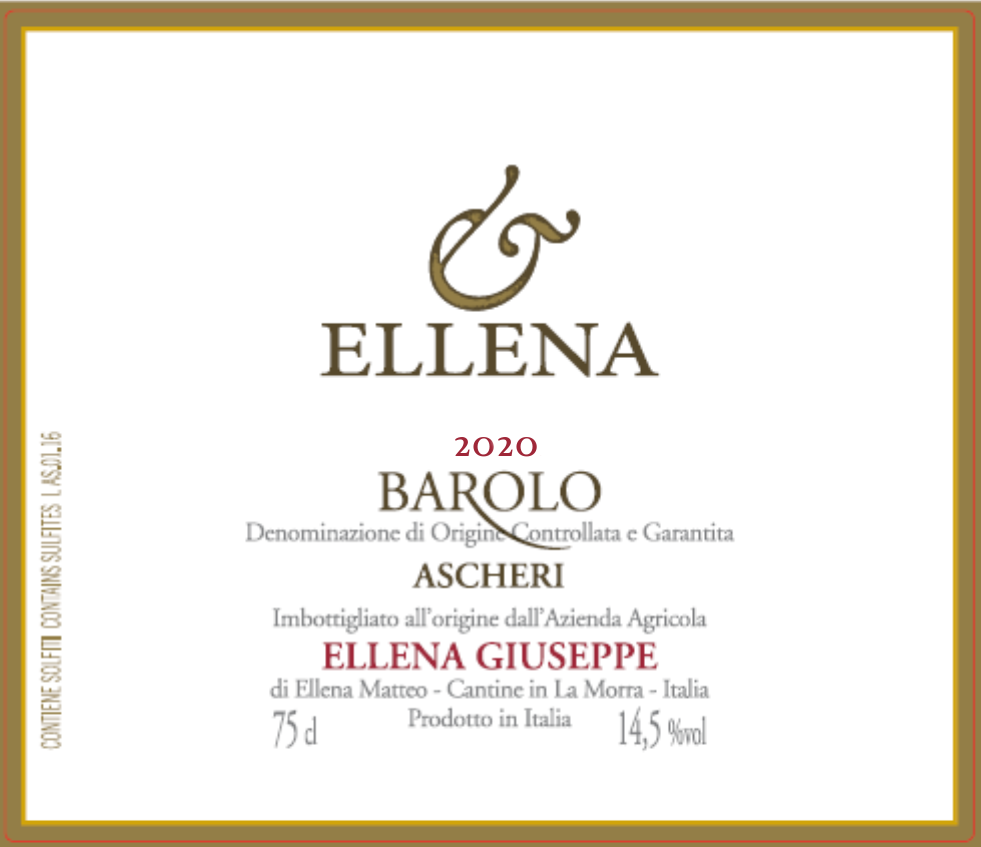
Stats
- Grapes: 100% Nebbiolo
- Vineyard: Ascheri Vineyard
- Vine Age: 51-years-old
- Soil Type: Calcareous clay
- Viticulture: Practicing organic
- Fermentation: Native – stainless-steel
- Skin Contact: 60 days
- Aging: 12 months in French barriques (15% new oak) then 18 months in a large cask
- Alcohol: 12.5%
- pH: 3.47
- Total Acidity: 6.02 g/L
- Total SO2: 85 ppm
- Total Production: 375 cases

Tasting Note
Brilliant garnet red in color, this wine reveals aromas of mature red fruit with delicate hints of truffle and spice. On the palate, it is harmonious and well-structured, with depth and finesse. The 2020 vintage is a classic, delivering elegance, balance, and exceptional drinkability with soft tannins.
Press & Reviews
James Suckling
92
"This shows an intense nose of spices, blue flowers and hints of tar, dark cherries and bramble berries. Medium-bodied, dusty and velvety on the palate, with ripe tannins and a core of juicy fruit. Smooth and textural. Try after two to three years."
- James Suckling
- James Suckling
Jeb Dunnuck
92
"The 2020 Barolo Ascheri displays more ruby color in the glass and is deeper on the nose with notes of licorice, baked strawberries, leather, and balsamic herbs. The palate is equally matched with a bit broader and more expanding feel within a medium-bodied frame, and it offers more sapidity and ripe concentration, with sweet tannins as well as good evenness and length through the finish. It has a nicely balanced, sunny feel and should drink well over the next 10-12 years."

